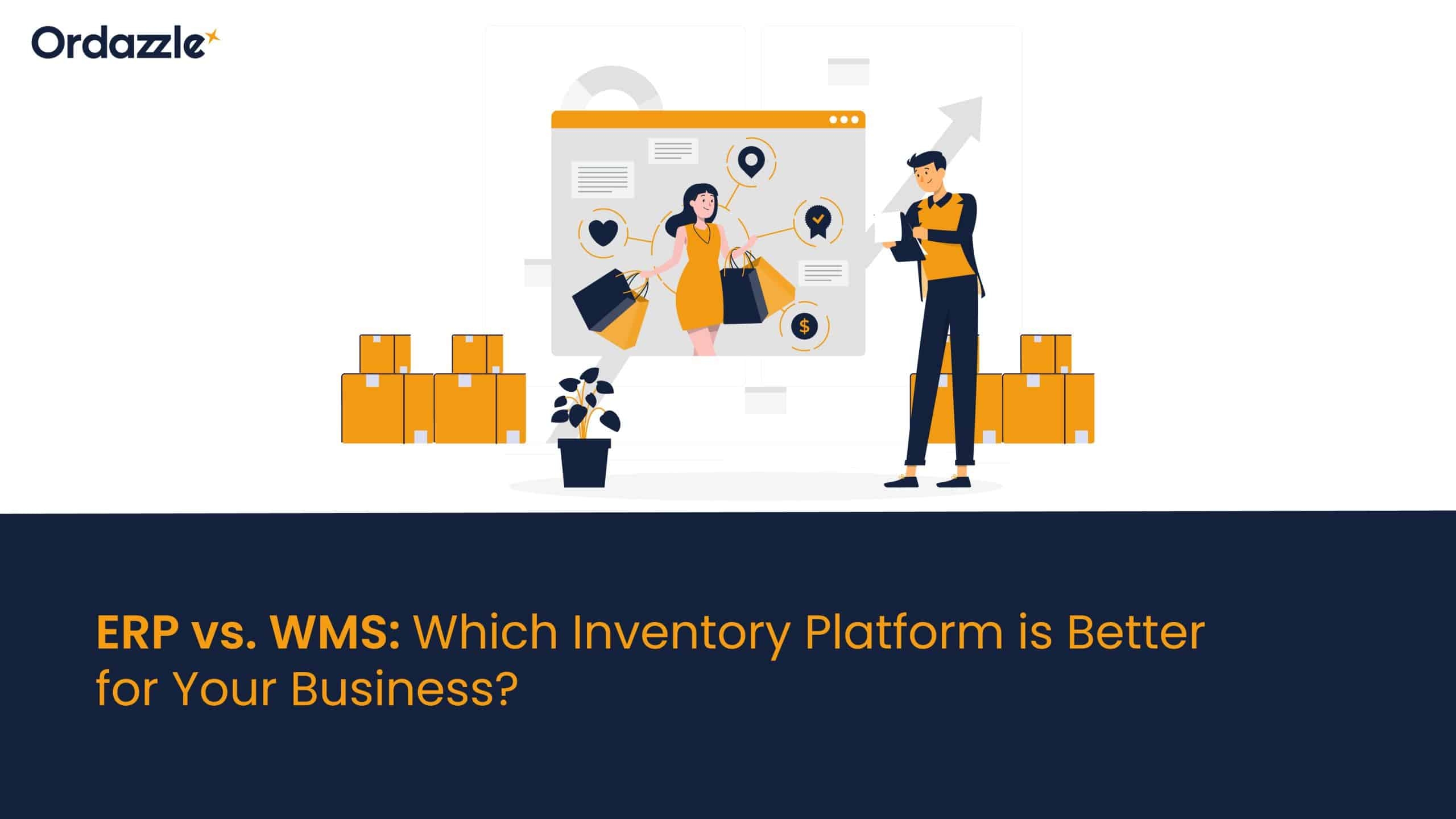ERP vs WMS: which inventory platform is better for your business?

When managing large-scale retail and e-Commerce operations, selecting the right software to handle inventory and storage is crucial for maintaining business efficiency.
There are two choices – ERP (Enterprise Resource Planning) and WMS (Warehouse Management System).
While ERP systems provide a broad solution, integrating various business processes like finance, HR, procurement, and inventory management into one platform, WMS is a more specialised unit designed to improve warehouse operations like order fulfillment, inventory tracking, and shipping.
So, ERP vs WMS, which is better?
Going by statistics alone, according to the figures published by the Aberdeen Group, businesses that use ERP have observed a 22% reduction in operational costs. On the other hand, WMS has helped businesses improve inventory accuracy by 20%.
So, which e-Commerce solution should you go for? In this blog, we’ll delve into the differences between the two types of resource planning software and help you make an informed decision.
ERM vs WMS – Overview
Before we delve into the differences, let’s clear the basics of each platform.
What is ERP?
ERP is typically used by companies looking to handle critical back-office functions on a single platform. One main benefit of ERP is that companies across diverse verticals can use the software.
Given the broad scope of ERP systems, multiple departments can easily use, view, and share data through reports and dashboards. For instance, ERP can automate and simplify purchasing, accounting, HR management, and inventory control management.
Moreover, ERP reduces the need for integrations and interfaces between disparate systems, providing interoperability and a consistent look and feel. As for warehouse management, most ERP systems include basic, surface-level functionalities. For companies with complex, granular needs, that level of control might not be enough.
What is WMS?
A WMS manages processes from when inventory and products enter the warehouse until they leave. Retail and e-Commerce companies with a manufacturing facility or warehouse may consider integrating a WMS in their tech stack.
Rather than offering functionalities that businesses can use across the entire organisation, a WMS targets warehousing-specific needs. It provides dashboards, reports, and tools to avoid downtime and ensure warehouse operations are aligned to efficiency. This includes all phases, from acquiring raw materials to shipping the finished products.
An e-Commerce solution like WMS integrates with ERPs and other platforms to provide functionalities beyond WMS itself.
Also Read: How e-Commerce Companies Can Make the Most of e-Commerce Solutions
ERP vs WMS – understanding key differences
The main point of difference in ERP vs WMS comparison is that ERP is primarily an accounting platform that analyses operations against the bottom line and automates processes across the business. A WMS is a specialised tool for managing warehouse and inventory data and provides optimisation insights for the storage and movement of inventory based on real-time information.
In terms of warehousing and inventory management systems, the comparison between WMS and ERP is the same as inventory management vs inventory accounting.
ERPs are primarily leveraged by financial executives and CFOs to analyse inventory related to important accounting decisions (e.g., loss reports, profits) rather than the detailed, granular optimisations that WMS provides to prevent supply chain mistakes.
Let’s look at it through an example.
Say, we have a donut-delivering robot.
An ERP system integrated with a robot would show it that there’s an order for 15 donuts, the cost of the donuts, the donut store with the highest sale, and that they were successfully delivered to the customer. It would not gather any information or data that would make the delivery of donuts faster or more efficient.
On the other hand, an e-Commerce solution like WMS would show something like: “MG road is closed for construction today; take the service road instead. It should take you 23 minutes to receive and deliver the donuts. Go to X Donuts instead of Y Donuts for a fresher batch that can delivered faster.
ERP vs WMS – what to choose?
The short answer is this: whichever platform fits your purpose.
It’s just like choosing a car. You need to understand your requirements and how you intend to use the software to support your objectives. Only once you truly understand what you want can you make an informed decision by weighing the merits of each system.
For most companies, a combination of both works well. For example, you can use ERP for finance-related transactions because it works across all departments. On the other hand, a WMS sends any financial data it captures to the ERP for consolidation with other information.
Over to you
As is evident, both systems were built for completely different purposes. If you’ve performed a need analysis and think WMS is more suited to your logistics needs, then Ordazzle’s unified inventory management system is something you’re looking for.
With Ordazzle’s e-Commerce solutions, you can get complete visibility into allocated inventory, reorder points, buffer stock positions, and reserved inventory at each warehouse level on a single dashboard.
Manage your warehouse and inventory in a more streamlined manner. Connect with us and get started today!


